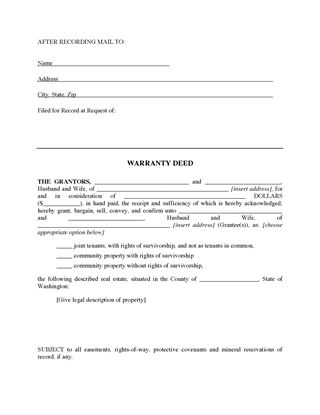If it is done the other way around, it would be the same as betting on the future seriously damaging the current solvency. In the short term, for current activity, it is necessary to look for quick and low-cost solutions. Most SMEs are financed with commercial credit, that is, they seek to pay suppliers as late as possible and speed up the collection of their own invoices. This ratio is both an indicator of indebtedness and liquidity, as it measures the ability of the company to respond to its short-term debts with its most liquid assets, short-term as well. This indicator must be greater than one since below it means that the company is not able to meet its working capital debts with the liquidity that it is capable of generating. It is an indicator of the company’s ability to repay long-term debt, and it is both an indicator of indebtedness and profitability.
Debt is the amount of money company owes to the other entity such as bank and other creditors. It is the future obligation that raises due to borrowing and lending in the past. The company borrows money from other parties to make expand the business. It does not incur due to the daily operation such as the purchase of goods or service. An expense is the cost of operations that a company incurs to generate revenue. Unlike assets and liabilities, expenses are related to revenue, and both are listed on a company’s income statement.
- The fastest way to pay off debt is to devote a greater portion of your income to monthly debt payments, ideally paying off credit card debts in full each month before any interest charges kick in.
- Long-term liability or non-current liabilities are the obligations that will be due in more than a year.
- The borrower is assigned a credit limit and they can use their credit card or credit line repeatedly as long as they don’t exceed that limit.
- A person or business acquires debt in order to use the funds for operating needs or capital purchases.
- Few people could buy a home without a mortgage, and many people couldn’t afford a new car without an auto loan.
It comes along with the interest that the lender charge to the borrower. While liabilities can be beneficial, you don’t want to incur so many that you’ll find yourself or your business financially strapped. Once you identify all of your liabilities and assets, you can find your net worth. A liability is something that is borrowed from, owed to, or obligated to someone else.
Advantages and Disadvantages of Debt
Liabilities must be reported according to the accepted accounting principles. The most common accounting standards are the International Financial Reporting Standards (IFRS). However, many countries also follow their own reporting standards, such as the GAAP in the U.S. or the Russian Accounting Principles (RAP) in Russia.
For example, in most cases, if a wine supplier sells a case of wine to a restaurant, it does not demand payment when it delivers the goods. Rather, it invoices the restaurant for the purchase to streamline the drop-off and make paying easier for the restaurant. Others use the word debt to mean only the formal, written financing agreements such as short-term loans payable, long-term loans payable, and bonds payable. Others use the term debt to mean only the formal, written loans and bonds payable.
- The principle of double-entry that governs accounting implies that every item must have its counterpart.
- This ratio varies greatly, depending on the sector to which the company belongs, but as generally normal, it should be between 40% and 60%.
- Analysts and creditors often use the current ratio, which measures a company’s ability to pay its short-term financial debts or obligations.
- In the calculation of that financial ratio, debt means the total amount of liabilities (not merely the amount of short-term and long-term loans and bonds payable).
- Adam Hayes, Ph.D., CFA, is a financial writer with 15+ years Wall Street experience as a derivatives trader.
From a business perspective, a liability is defined as money owed to third parties. It is a debt or financial obligation that is settled by an exchange of economic benefits at a future date. For example, long-term loans, bonds payable, trade payables, bills why real estate investors should consider lease options payable, short-term loans, bank overdraft, etc. The indebtedness of a company must be proportionate to its operating capacity. It is reasonable, and even necessary at times, to resort to external capital to boost activity, but always with good planning.
Free Financial Statements Cheat Sheet
In some cases, this may mean your liability transforms into an asset, like a mortgage balance becoming full home equity. In other cases, satisfying a liability simply means you have no further obligation to the party you were paying, as when companies pay off a bond issue. Once you know your total liabilities, you can subtract them from your total assets, or the value of the things you own — such as your home or car — to calculate your net worth. A liability is something a person or company owes, usually a sum of money. Liabilities are settled over time through the transfer of economic benefits including money, goods, or services.
Types of Corporate Debt
Total liabilities are the combined debts and obligations that an individual or company owes to outside parties. Everything the company owns is classified as an asset and all amounts the company owes for future obligations are recorded as liabilities. On the balance sheet, total assets minus total liabilities equals equity.
Short-term, or current liabilities, are liabilities that are due within one year or less. They can include payroll expenses, rent, and accounts payable (AP), money owed by a company to its customers. The quick ratio is the same formula as the current ratio, except that it subtracts the value of total inventories beforehand. The quick ratio is a more conservative measure for liquidity since it only includes the current assets that can quickly be converted to cash to pay off current liabilities. The value of the short-term debt account is very important when determining a company’s performance. Simply put, the higher the debt to equity ratio, the greater the concern about company liquidity.
Similarly, when someone takes out a mortgage to buy a home, the home itself typically serves as collateral. If the borrower fails to make payments, the lender can foreclose and take the home. When students take out federal student loans to pay for college, they will receive a certain sum of money that they agree to pay back in the future with interest. If they choose what’s known as the standard repayment plan, they will be required to make fixed monthly payments for 10 years, at which point their debt will be completely paid off. Because payment is due within a year, investors and analysts are keen to ascertain that a company has enough cash on its books to cover its short-term liabilities. Current liabilities are used as a key component in several short-term liquidity measures.
What are current assets?
The most common liabilities are usually the largest like accounts payable and bonds payable. Most companies will have these two line items on their balance sheet, as they are part of ongoing current and long-term operations. Short-term debt, also called current liabilities, is a firm’s financial obligations that are expected to be paid off within a year.
Below are examples of metrics that management teams and investors look at when performing financial analysis of a company. Liabilities can help companies organize successful business operations and accelerate value creation. However, poor management of liabilities may result in significant negative consequences, such as a decline in financial performance or, in a worst-case scenario, bankruptcy. Debt is always negative in a business because it allows others to have a claim of your profit in a case where you run a business. If you decide to use a credit card, a business line of credit or any other form, it is always advisable to pay careful attention to the details, in order to monitor the interest from your debt.
In the case of ARMs, the interest rate can change periodically, usually based on the performance of a particular index. When something in financial statements is referred to as “other” it typically means that it is unusual, does not fit into major categories and is considered to be relatively minor. In the case of liabilities, the “other” tag can refer to things like intercompany borrowings and sales taxes. If one of the conditions is not satisfied, a company does not report a contingent liability on the balance sheet.


